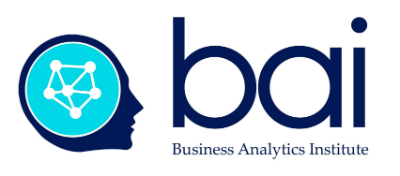Is leadership just an illusion in an economy in which everyone prefers posting to listening?
With a regularity surpassing that of the timeless migration of Artic terns, I ask my management students to explore and explain how birds flock together. After discussing whether birds have leaders and followers, we explore various hypotheses of where they learned to fly south. We then compare such bird flocks to markets, corporations, and territories with similar questions about leadership, followship and organizational learning. In an “attention economy”[i] in which everyone is posting and no one seems to be listening we can justifiably wonder whether any one “bird” has the vision, charisma, information to lead the flock.
I suggested in The Effective Organization [ii] that our perceptions of market and organizational innovation reflect one of two basic models of decision-making. In the first model, we accept that our leaders have exceptional vision. They understand where the market is going, and intuitively what the organization can produce in the months ahead. They announce the intended results and count on management to define the actions that will produce decisions about what types of knowledge need to be acquired. This knowledge then will define in which contexts the organizations needs to work to collect the data to design, produce and sell.
An alternative vision suggests that no one leader has enough answers or insight to seize future market opportunities. Rather than working top-down, this vision suggests that the organization should begin by collecting and aggregating the available market data to elucidate the contexts in which the organization operates. This context conditions both what knowledge needs to be acquired and how to transform knowledge into action. Organizational results are not the product of outstanding leadership, but of collective decision making based on data gleaned from the environment.
This ladder of initiatives describes contrasting models of decision-making that reflect ingrained beliefs about leadership, vision, and the pertinence of data. Top-down decision-making focuses on the importance of the individual, best practices and the need for process optimization. Bottom-up decision-making privileges collective decision making, the importance of network dynamics, and the need to learn to explore the context in which we work. They reflect deterministic and stochastic decision environments associated with structured and non-structured learning. These visions models underpin how we teach decision science and how we practice management.
The practice of business analytics is heart and soul of the Business Analytics Institute. In our Summer School in Bayonne, as well as in our Master Classes in Europe, we put analytics to work for you and for your organization. The Institute focuses on five applications of data science for managers: working in the digital age, managerial decision making, machine learning, community management, and visual communications. Data-driven decision making can make a difference in your future work and career.
Lee Schlenker
[i] Chatfield, T.. (2013). Does each click of attention cost a bit of ourselves? [online] Available at: https://aeon.co/essays/does-each-click-of-attention-cost-a-bit-of-ourselves [Accessed 21 Mar. 2017]..
[ii] Schlenker, L. and Matcham, A. (2005). The effective organization. 1st ed. Chichester: J. Wiley.



